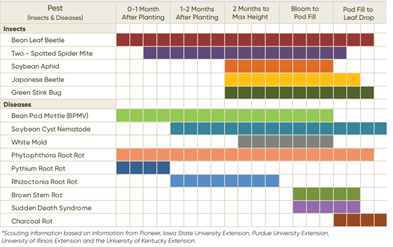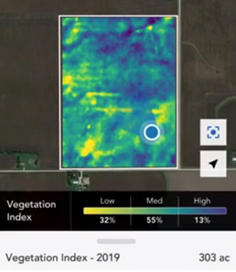This article was originally published in the September issue of Illinois Field & Bean. View the article here.
Harvest has always been a crowd favorite. Whether it’s the humid heat of summer being replaced by crisp, autumn air, or the end of year holidays peeking out on the horizon, harvest tends to bring with it a sense of happy endings. But as any farmer knows, the work doesn’t stop even after the crop is out of the field.... Read More →
ILSOYADVISOR POST
Harvest Scouting Priorities
September 28, 2020
With harvest starting on some early maturing varieties, soybean yields are on a lot of growers’ minds. This year Illinois experienced a large feeding frenzy by Bean Leaf Beetle in many areas that called for late application of insecticide, but what else could explain loss in yield? Apart from June planted beans, little can be done at this point to help retain yield, but there are a few things to scout for in order to help explain some problem areas that you might encounter this fall or possibly next year.
- Insects & diseases
- Final stand counts
- Stressed areas

Any defoliation to soybeans can hurt yield, but during reproductive stages it is more critical than ever. Pests we cannot see, like Soybean Cyst Nematode (SCN), can slow crop growth in vegetative stages and stunt the plant, overall producing fewer pods and seeds per pod. If something seems off, a soil SCN test should be done for that field. Outside of physical damage to leaf and vascular tissue, most diseases will overwinter in debris and come back next year.
Making a preharvest scouting trip can give you a heads up for next season. Some diseases you cannot see from the road its important to look in the lower canopy or split stems open to observe damage. Scouting for disease will also help evaluate standability, which fields to harvest first. The big picture when it comes to late season scouting is just to get out there and see what you have before the busy harvest season hits and you don’t have time to evaluate a field.
2. Final stand counts: Lots of early season problems led to lower stand counts that didn’t quite reach levels that called for replant. This creates a couple of opportunities for growers to find out ROI at the populations they are not used to planting. Soybeans have the awesome ability to adapt and react to stresses by branching and adding flowers/pods when conditions are favorable. So, establishing a real final stand vs. what the planter read might give some insight and help give some comfort when deciding to lower the soybean seed population next year.

medium, and high vegetation
readings.
In most situations, a lot of the problems we face year to year are out of our control. Disease and insect pressure fluctuate with temperature and humidity, emergence is dependent on rain received in the spring, and stressed areas are the result of several of these things combined. Preventative measures and scouting are some of the best procedures to combat what Mother Nature throws at us and avoid future problems.





Comments
Add new comment